If you haven’t heard of Encanto yet, you may be living under a rock. Encanto came out Thanksgiving Day and has been all the rage since. Our family just watched it a couple of weeks ago and we already watched it three times over one weekend. If you’ve seen the movie, you may have “We don’t talk about Bruno-no-no” perpetually stuck in your head. For a bunch of people who aren’t supposed to be talking about Bruno, we sure have spent a whole lot of time singing about him!
Encanto, which means “charm” in Spanish is an enchanting, encouraging, and positive film about a family that, through the granting of a miracle, lives in a magical house. The family members in that house (except for one—spoiler alert!) all have special gifts given to them by the “miracle”, a candle that burns brightly and keeps the magic going in the house. But, as all stories do, there has to be a problem. The magic seems to be going out. The miracle needs to be saved! But how do you save a miracle? If you haven’t seen the film, you need to watch it to find out!
The Hook:
If you’ve read any of my other blog posts, you know that I love to use maps! Bust out that paper map or globe (a digital version works, too, but I prefer a tactile experience, if possible). Show your children Colombia on the map. That’s where our story takes place. So often when kids (or even adults, for that matter) hear “Spanish” they think of Spain or Mexico. But there are SO many countries that speak Spanish! Show some of those on the map! All the countries in Central America and most in South America (except Brazil (Portuguese), Suriname (Dutch), Guyana (English), and French Guiana (French) -tuck that away for Jeopardy someday) speak Spanish. Point out these different countries that do speak Spanish. Go over some Spanish words for family words that will be used in the movie. Abuela means grandmother, Abuelo means grandfather, tio means uncle, tia means aunt, and casita refers to their house.
With that, you’re ready to start watching Encanto! Warning: the songs will get stuck in your head. Don’t say I didn’t warn you!
Materials
-construction paper/card stock or poster board
-pencils/colored pencils/markers
-scissors
-Play-Doh, clay, or model magic
-Toothpicks or wooden skewers
-Popsicle/craft sticks
-Painters tape or masking tape
-Materials for building (blocks, legos, magnatiles, etc.)
What would be your Encanto—your charm or ability?
This is a fun one. Automatically your kids will start talking about which power they wish they had; to shape-shift like Camillo, make flowers appear everywhere like Isabela, or hear animals talk, like Antonio. But what if they could have absolutely any power? What would it be? Pose that question to your children and see what they come up with. My one daughter said she would make flowers grow like Isabela, the other said she would change her appearance whenever she wanted, and a friend who did this activity with us said she would have an ice power.
You can also encourage your children to write about their power. What is it? How does it work?
Casita’s Magic- Create Your Own Casita
Casita (the house) is its very own character in this movie. Casita is an example of personification—a non-living thing being given human like characteristics. Have your children make their own casita. This can be with blocks, legos, Magnatiles—any building material you have. It can be a combination. This is a great exercise in spatial awareness and engineering. Builders need to try different things to get their house to stay up. For older kids, challenge them to include moving parts— doors that can open and close, walls that you can move. Give them an engineering challenge! My younger daughter made a house out of Magntiles.
My eight year old opted for legos. Here’s a bird’s eye view of her casita.
Here you can see Julieta’s kitchen on one side and Luisa’s treadmill, weights, and trophy on the other.
Here is Bruno’s tower. You can even see the miracle candle glowing brightly!
Bruno’s Vision Puzzle
Bruno sees a vision that may be the key to Mirabel’s involvement in the future of the house. She finds pieces of his vision and has to put it together like a puzzle.
I have to give a shout-out to Ms. Escobar for this one. I saw her do this activity in her classroom. Take several craft sticks and put them together, side to side, horizontally. For younger kids, you can use the thick craft sticks. For older kids, use thinner ones. Take a piece of painter’s tape and tape the sticks together, putting a strip of tape down each side of the puzzle. Then flip it over.
Give your children markers or sharpies (watch out, they stain!). Have them create a picture, trying to use as much of the space as they can. The bigger the picture, the more it will cover all of the sticks, the less empty space you’ll have. Then have them color in this picture. Then, peel the tape off of the sticks and mix them up. Then put the puzzle back together. They can give it to a friend or sibling to put together.
This is also a great activity for children to practice giving oral directions using “first, next, then, last”. They can give the sticks to a friend and give directions, like “First find the stick with the most blue and put it on top”. They can give directions for the other child to put the puzzle together.
Another option is that you can buy blank puzzles. Have students color their picture, take the puzzle apart, and put it together again. You can find a link to buy them here.
A third option is to just use construction paper, poster board, card stock, or foam. My older daughter’s class put on a little recess production of “We Don’t Talk About Bruno”. She took a piece of foam, drew a vision, and then cut it apart to use in their little play.
Recipe For Your Favorite Healing Comfort Food
Mama Julieta can cure with food. Ask your children- when they are feeling bad or sick? What food do they like best? What is their favorite “comfort food”? What would be their recipe for a healing food? You can use a free recipe template from teacherspayteachers.com here.
Here is one that my little one dictated to me and I wrote it down.
Interpretive Dance
I don't have to tell you that there is some amazing music in this movie. Lin Manuel Miranda (creator of Hamilton, In the Heights, and the Moana soundtrack) hit it out of the park with this one. The music just wants to make you move! Put on the music and let your children dance! They can create dance steps and teach other friends or sibling how to do these dance steps. It’s another great use of oral language—having the students use order words like “first, next, then, last” to describe how to do something.
If your children show interest you can also look up different types of latin dances like the salsa, cha-cha, and meringue. If you look these up on Youtube, remember to always watch YouTube with your children. You never know what adds or videos might load or be shown on the side bar. Little Movers has some great Latin Dance videos for kids. You can check out Samba, Cha Cha, and Baila Bounce. You can also check out this Encanto Freeze and Dance from Go Noodle.
Luisa’s Weights- Fun with Math
Luisa has quickly become a favorite character in this movie! I know her song “Surface Pressure” has become a favorite of many of my mom friends. We can so relate! What a good reminder for us! Not only can our kiddos learn something from this movie, but we can, too!
Put out some different color Play-Doh, Model Magic, or modeling clay. You will also need some tooth picks or wooden skewers. This activity will provide some fun with math! Have student come up with a key using colors and relate it to pounds. For example, white might be 1 pound, green might be 5 pounds, purple could be 10 pounds. If your child is older, he or she can make the key. For a challenge, you could also add the values of 2 pounds and 3 pounds.
Using this key, your child can make weights! If they want to make 10 pounds, they could make a weight with two green circles at each end. The older the child, the higher the number they can make. For younger children, they could make two weights, with two 5 pounds each, making a total of 20 pounds.
For older children, they can make the same amount in different ways. If they wanted to make two 20 pound weights, they could have one that has four 5 pound weights on it and one that has one ten pounds and two five pounds weights. Encourage your children to make all sorts of different amounts! How many can they come up with?
Well, that’s it for this movie! Leave me a comment and let me know what you think? I hope these will provide you with some fun and engaging activities to do during the mid-winter break.
~Nicole



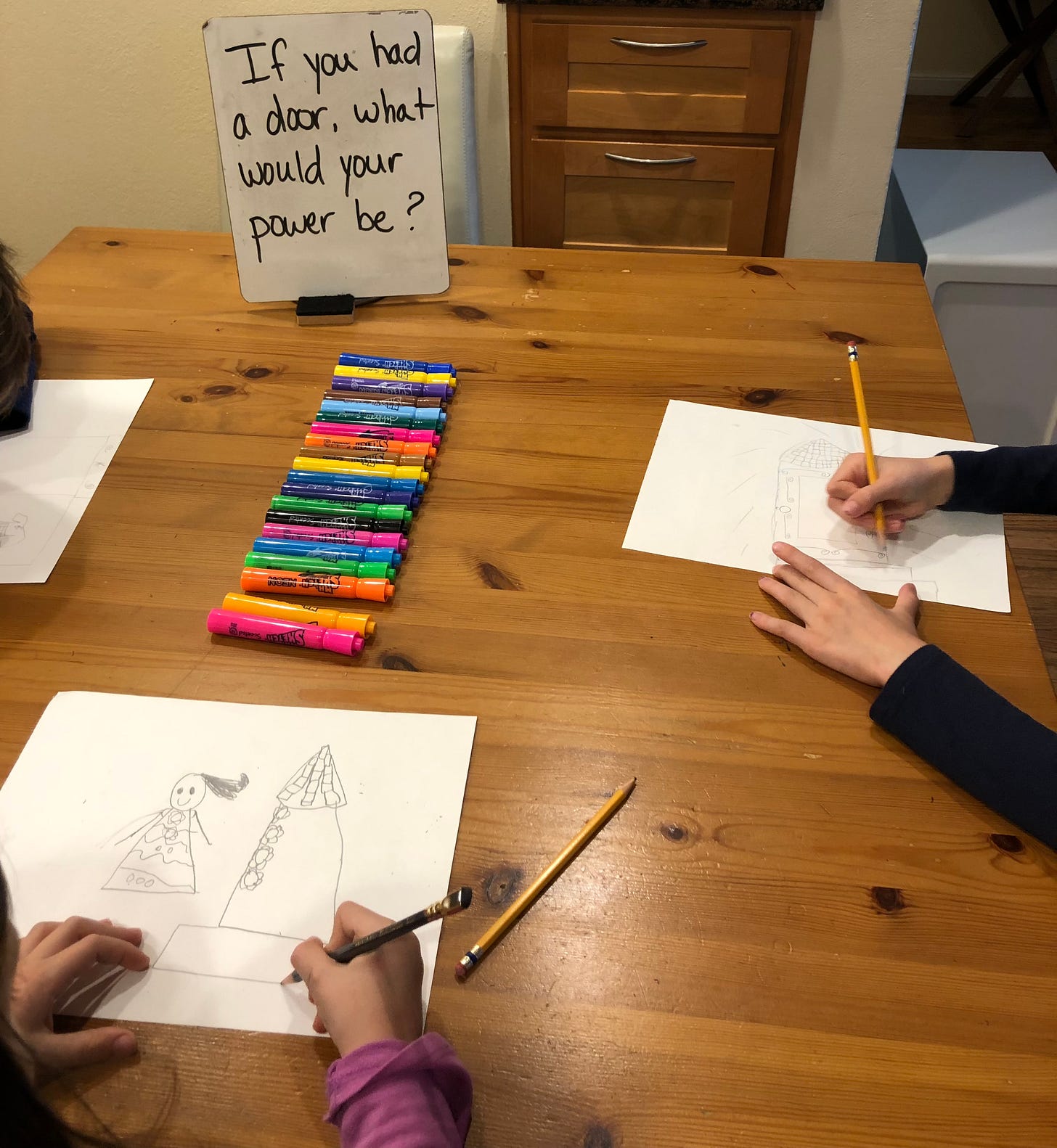
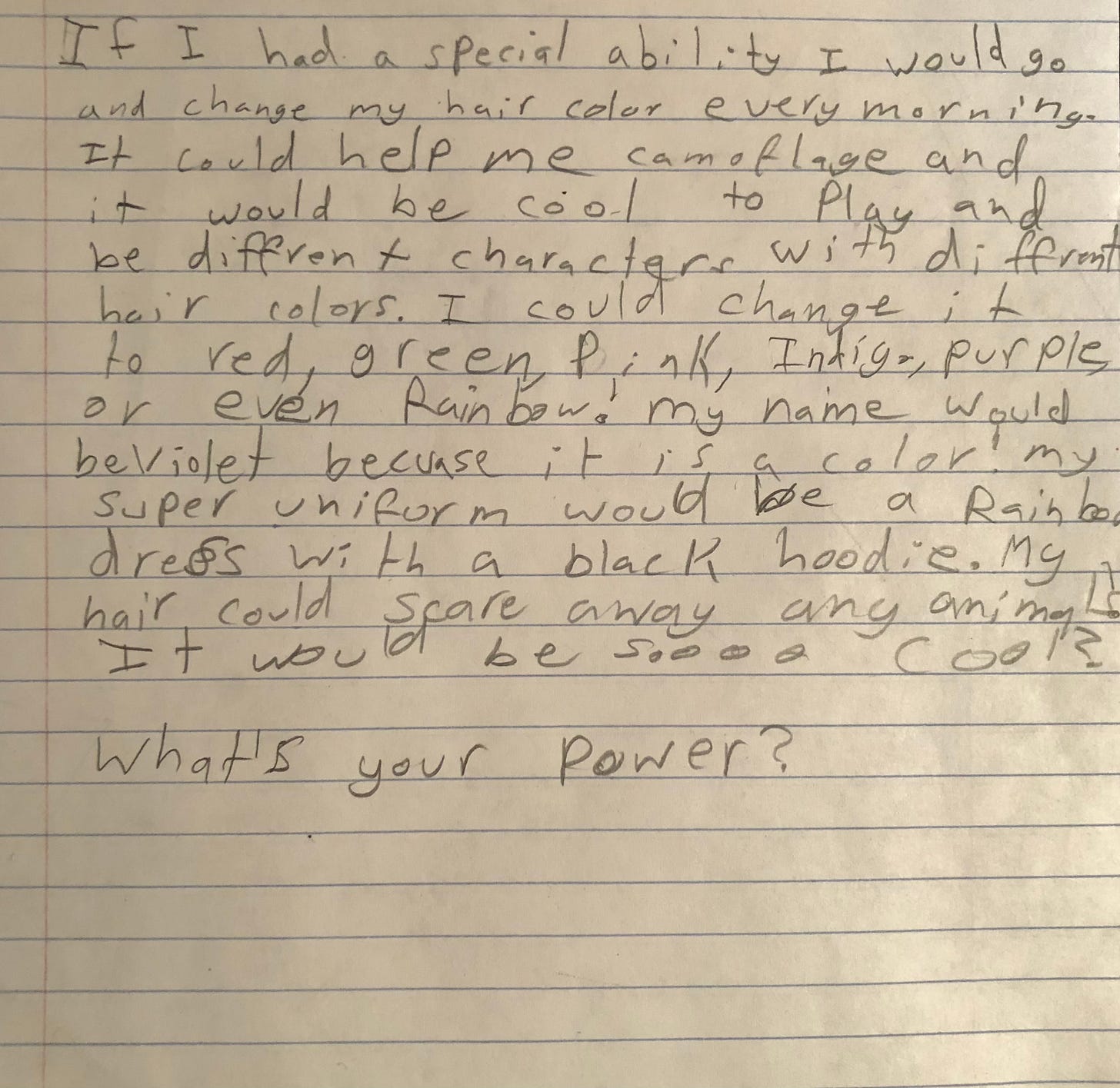
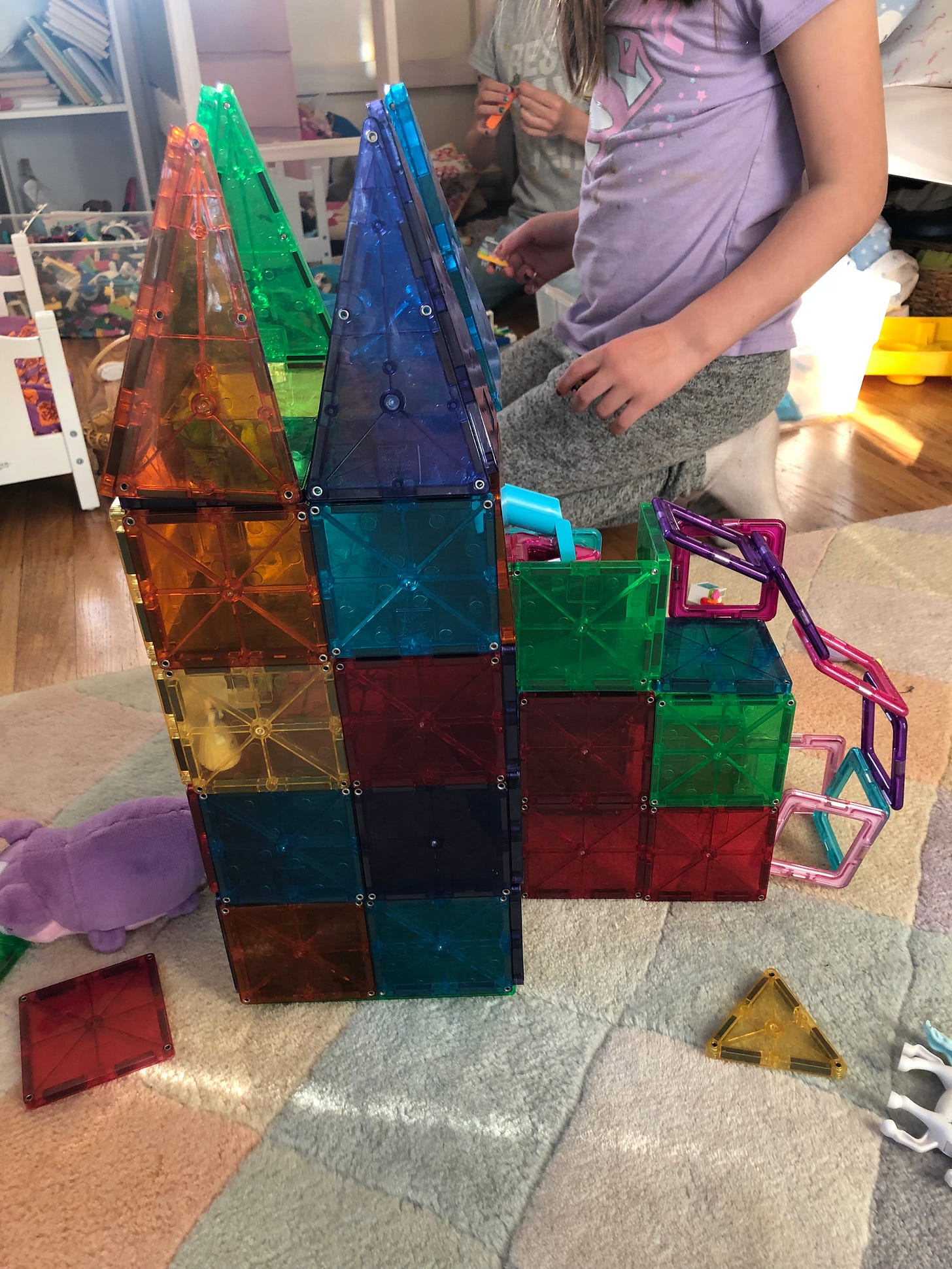
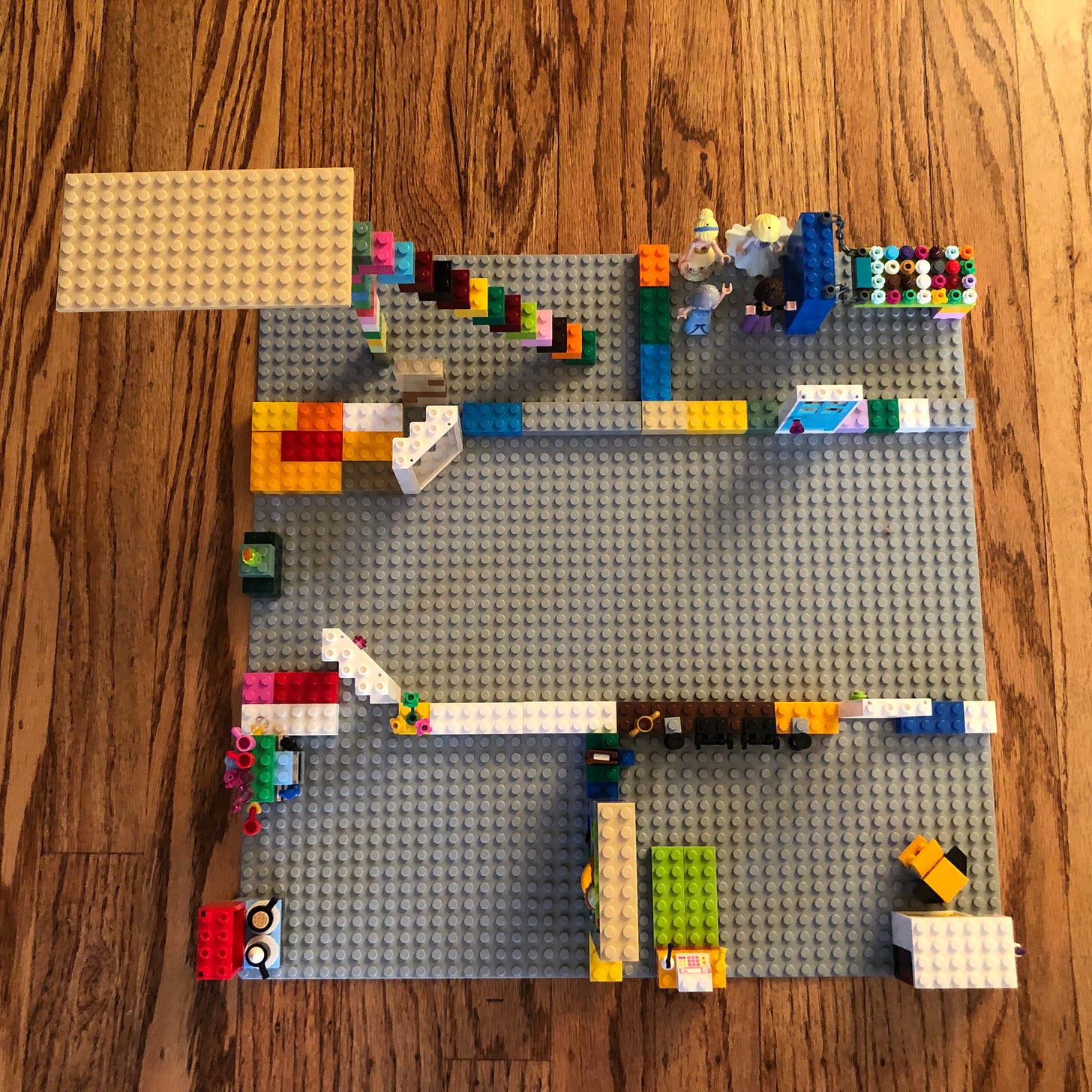
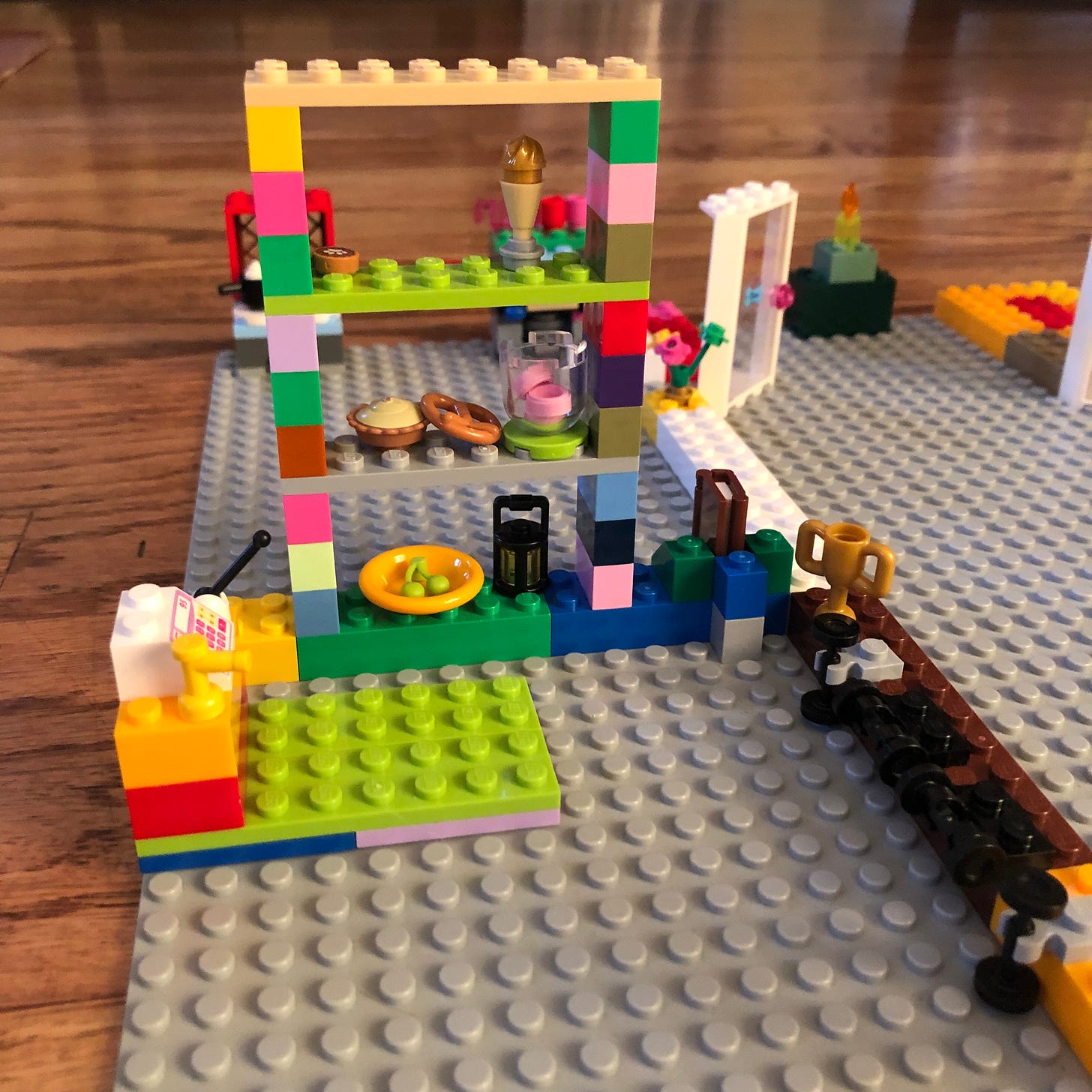


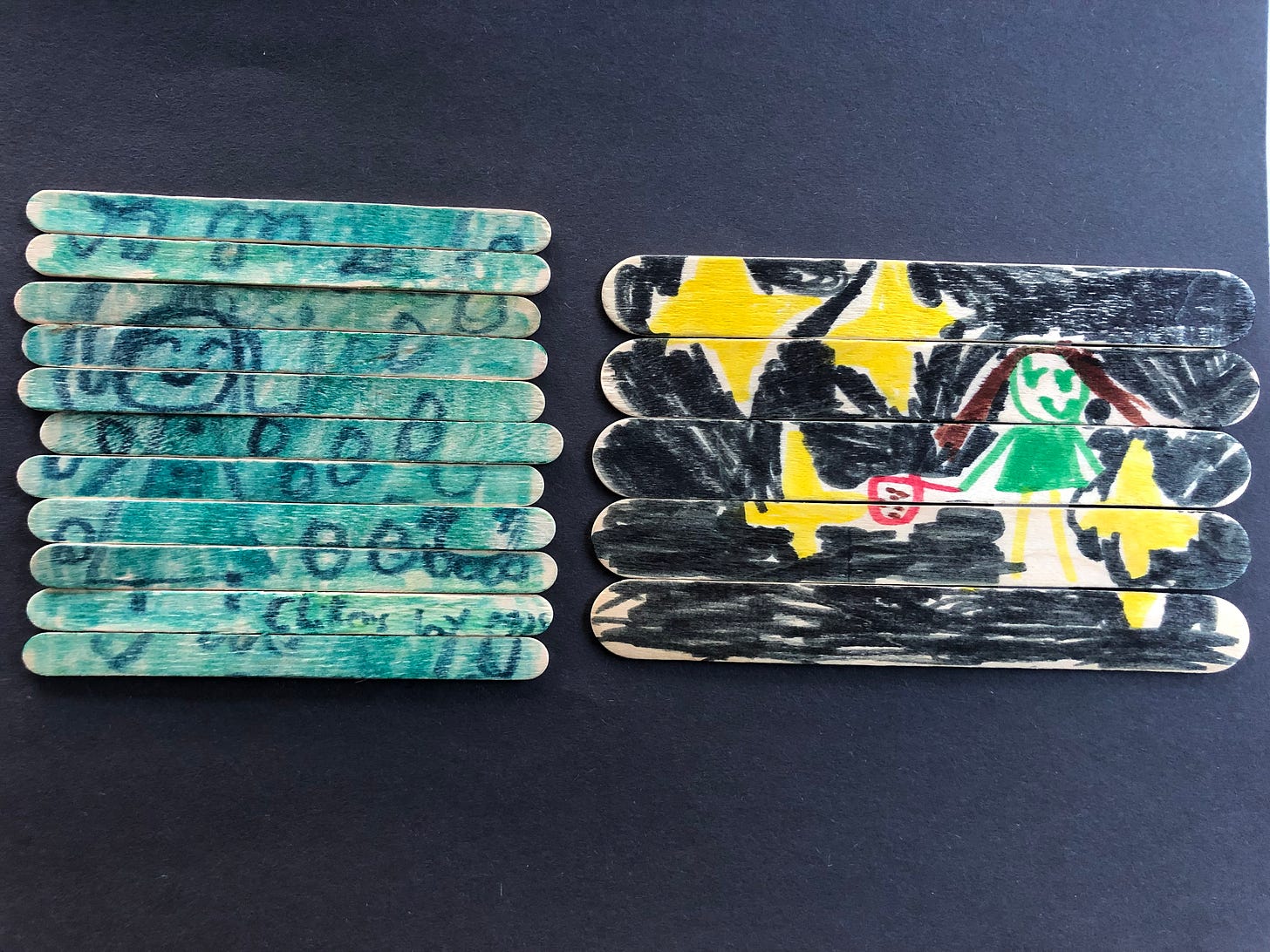
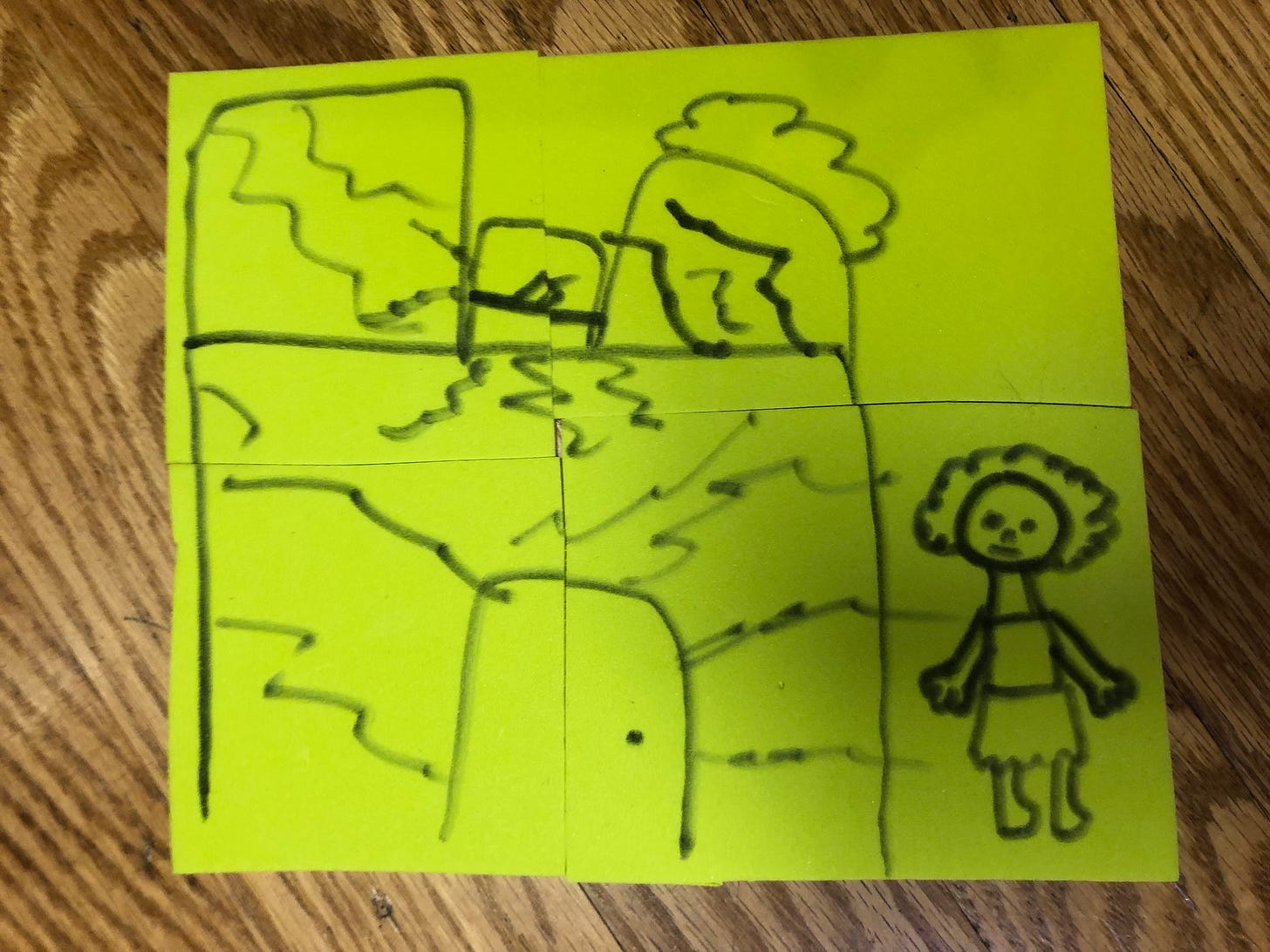


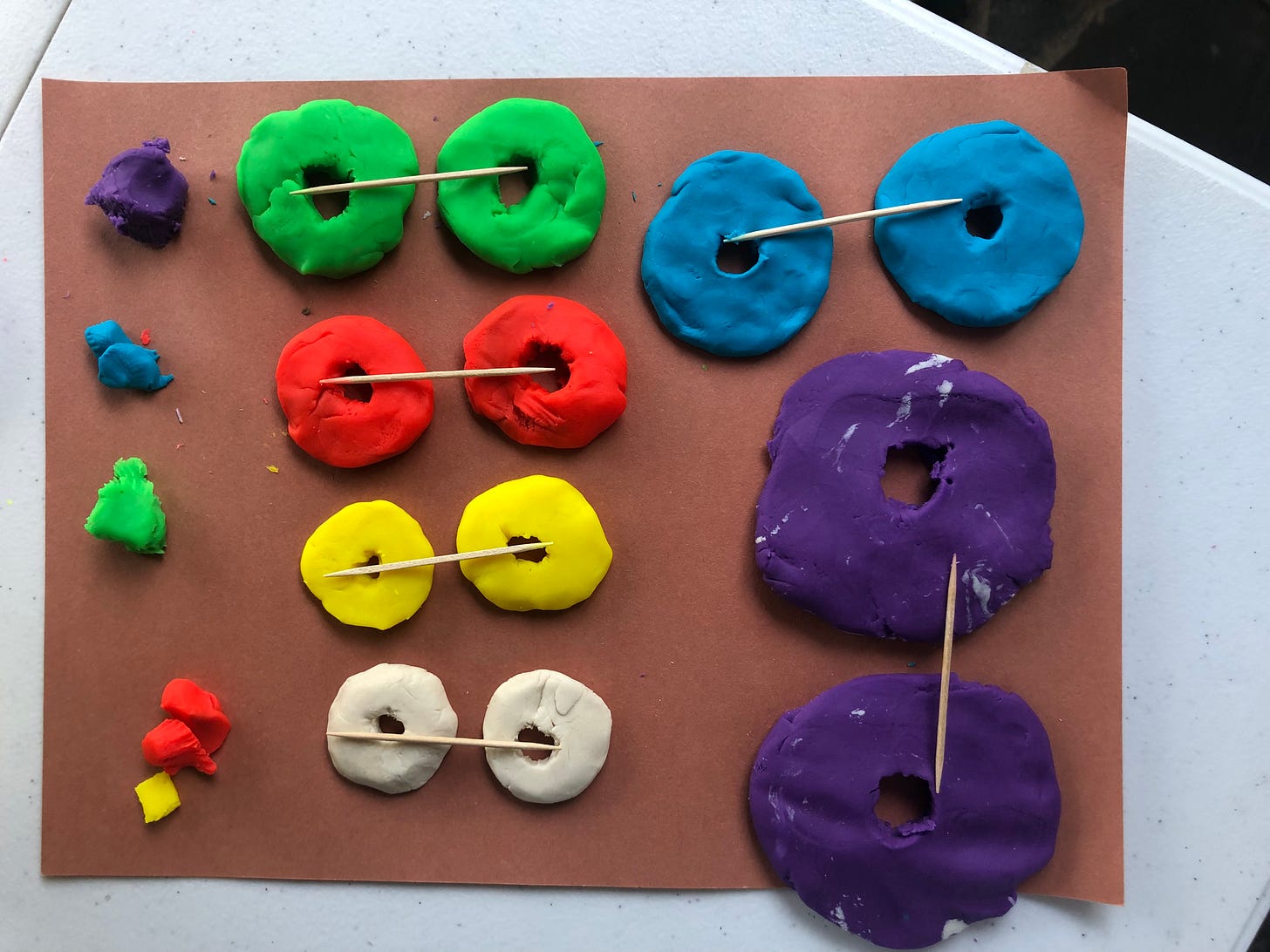
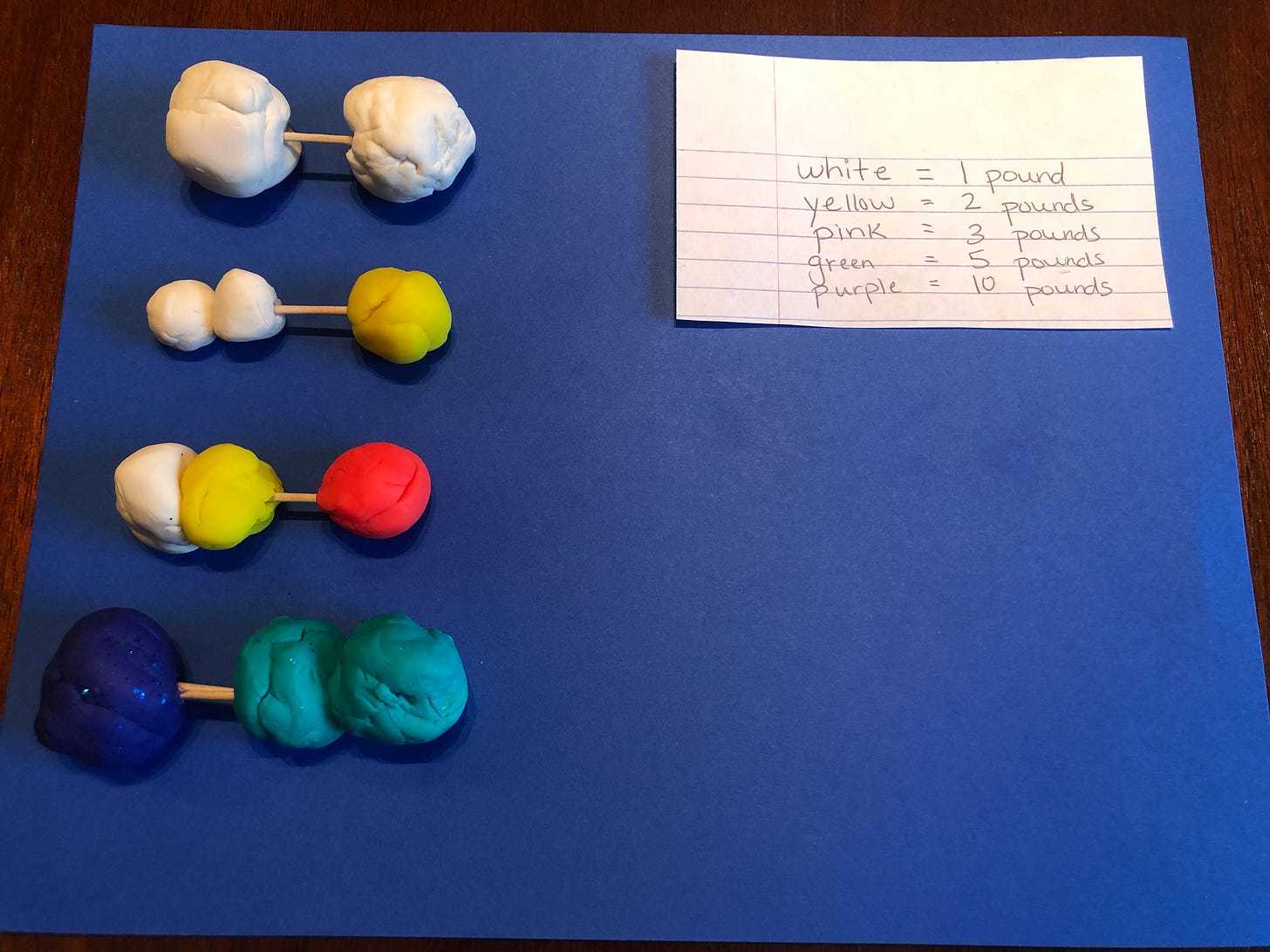
Love it!